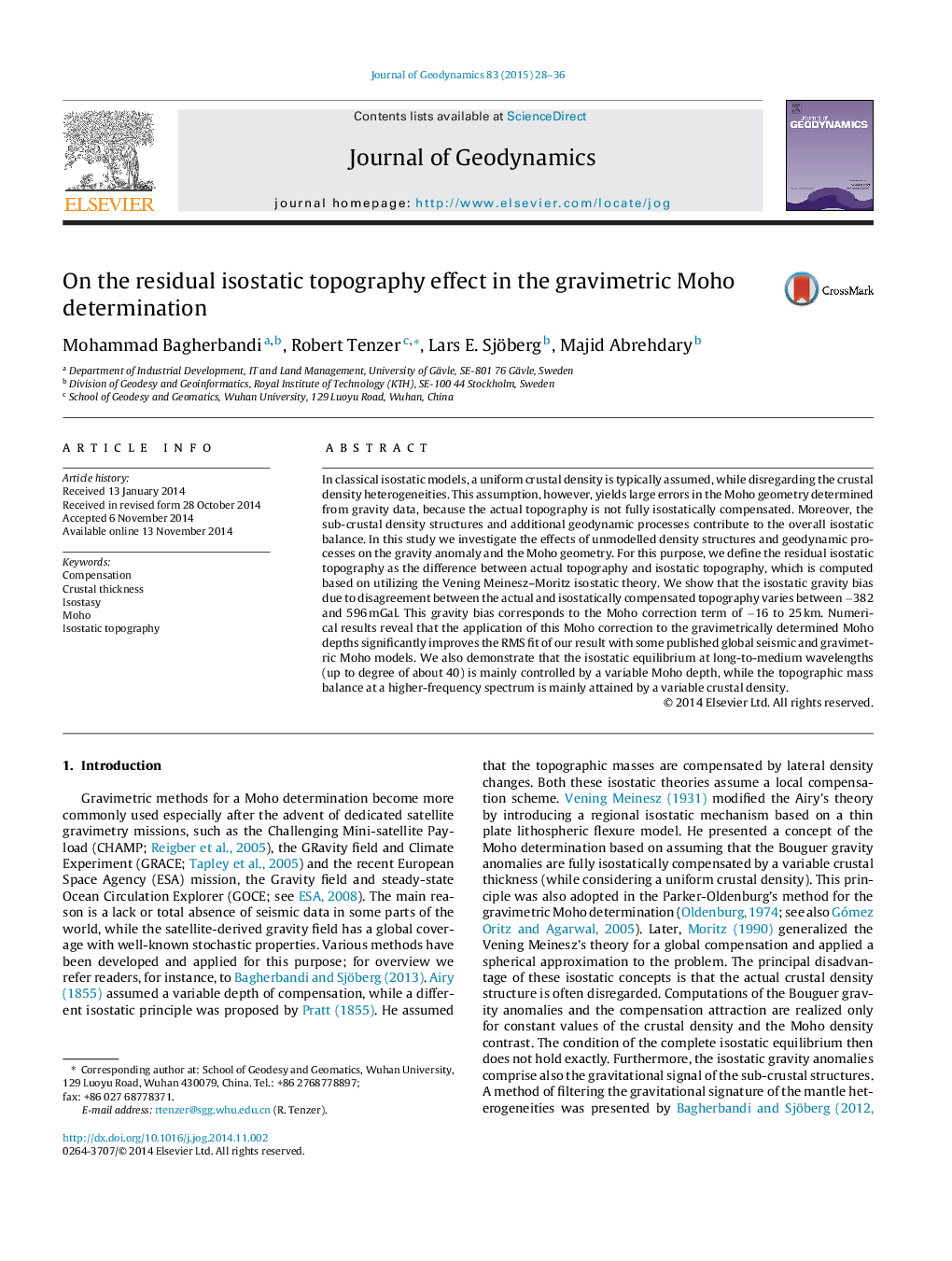| کد مقاله | کد نشریه | سال انتشار | مقاله انگلیسی | نسخه تمام متن |
|---|---|---|---|---|
| 4688001 | 1635766 | 2015 | 9 صفحه PDF | دانلود رایگان |
• Crustal thickness using an isostatic model.
• Studying disturbing gravity signals (non-isostatic effects) and filtering these effects from gravity anomaly to estimate Earth's crustal thickness.
• Determining the location of complete/incomplete compensation areas.
• Improving isostatic–gravimetric crustal thickness model using a seismic model, CRUST1.0.
In classical isostatic models, a uniform crustal density is typically assumed, while disregarding the crustal density heterogeneities. This assumption, however, yields large errors in the Moho geometry determined from gravity data, because the actual topography is not fully isostatically compensated. Moreover, the sub-crustal density structures and additional geodynamic processes contribute to the overall isostatic balance. In this study we investigate the effects of unmodelled density structures and geodynamic processes on the gravity anomaly and the Moho geometry. For this purpose, we define the residual isostatic topography as the difference between actual topography and isostatic topography, which is computed based on utilizing the Vening Meinesz–Moritz isostatic theory. We show that the isostatic gravity bias due to disagreement between the actual and isostatically compensated topography varies between −382 and 596 mGal. This gravity bias corresponds to the Moho correction term of −16 to 25 km. Numerical results reveal that the application of this Moho correction to the gravimetrically determined Moho depths significantly improves the RMS fit of our result with some published global seismic and gravimetric Moho models. We also demonstrate that the isostatic equilibrium at long-to-medium wavelengths (up to degree of about 40) is mainly controlled by a variable Moho depth, while the topographic mass balance at a higher-frequency spectrum is mainly attained by a variable crustal density.
Journal: Journal of Geodynamics - Volume 83, January 2015, Pages 28–36
